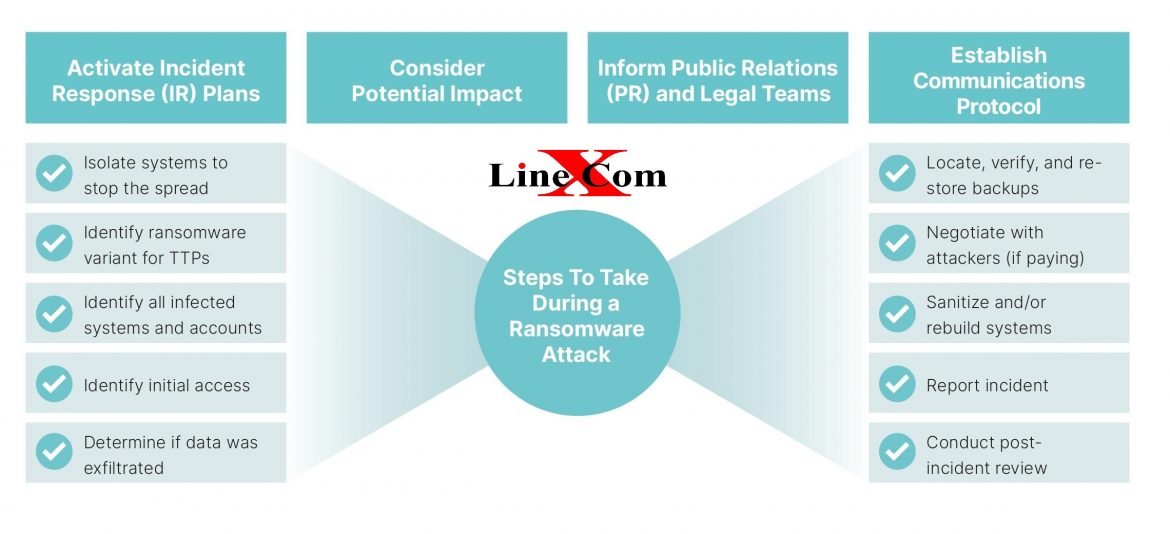What To Do if Ransomware Attack
In 2019, the year witnessed an astounding 187 million ransomware attacks, translating to an alarming average of over 500,000 daily assaults on businesses. Regardless of whether your organization has been fortunate enough to remain unscathed by ransomware or has previously encountered a breach, proactive readiness is paramount. When confronted with such a looming threat, comprehending the vital measures to mitigate its impact on your team, business, and personal well-being becomes paramount. Below, we present a concise overview of the steps your organization should follow when addressing an ongoing ransomware attack.
Steps To Take During a Ransomware Attack
First: Don’t Panic!
1. **Isolate and Contain the Infection**:
– Disconnect the compromised system from the network to halt ransomware spread.
– Disable any wireless connections like Wi-Fi or Bluetooth to control the infection.
2. **Assess the Situation**:
– Evaluate the extent of the breach, identifying impacted systems and data.
– Try to identify the specific ransomware strain involved to tailor your response.
3. **Notify Relevant Parties**:
– Alert your IT and cybersecurity teams immediately.
– Contact law enforcement agencies, like local police or the FBI, as necessary to report the incident.
4. **Engage a Ransomware Response Team**:
– Activate your internal incident response team if available.
– If not, consider engaging a reputable cybersecurity firm with ransomware expertise.
5. **Assess the Ransom Demand**:
– Determine if the attackers have made any payment demands.
– Be cautious about paying ransoms, as there’s no guarantee of data recovery and it may support criminal activities.
6. **Restore Data from Backups**:
– Use clean, up-to-date backups to restore affected systems.
– Ensure the integrity of backups to prevent compromise.
7. **Remove Ransomware and Malware**:
– Clean and sanitize infected systems to eliminate ransomware and other malware.
8. **Implement Security Improvements**:
– Identify and address vulnerabilities that facilitated the attack.
– Update software, apply patches, and fortify security measures.
9. **Educate and Train Employees**:
– Train your staff to recognize and prevent ransomware attacks.
– Emphasize cybersecurity best practices to bolster your defenses.
10. **Monitor and Test**:
– Continuously monitor your network for any signs of further intrusion.
– Conduct penetration testing to uncover weaknesses in your cybersecurity defenses.
11. **Report the Incident**:
– Comply with legal and regulatory requirements by reporting the incident to relevant authorities, such as data protection agencies.
12. **Communication Plan**:
– Develop a communication strategy to inform employees, customers, and stakeholders while adhering to legal and regulatory obligations.
Remember, proactive cybersecurity measures are key to preventing ransomware attacks. Regularly back up your data, maintain software updates, and educate your team about ransomware risks. Having a well-defined incident response plan is crucial for an effective response and recovery from such attacks.
